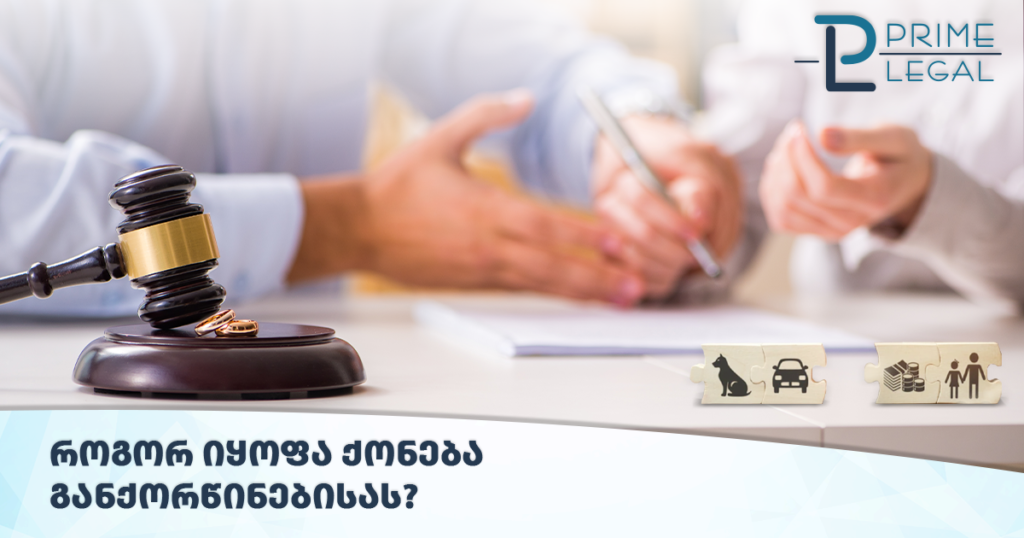How is property divided after divorce?
The division of co-ownership of spouses is regulated by the Civil Code, namely, the fifth book on family law. The Civil Code of Georgia – Civil Code of Georgia defines marriage, according to which it is necessary to have the consent of representatives of different sexes, men and women, in order to create a family, which must be registered in the territorial service of the State Services Development Agency.
According to the law, there are several grounds for termination of marriage, in particular, the death or declaration of death of one of the spouses, divorce. This can happen in the civil acts registration body - in case of consent of the parties, and in the court - in case of dispute between the parties.
When the court considers the issue of divorce, it may also consider the rule of dividing the property jointly owned by the spouses.
Spouses have personal and property rights in a registered marriage.
Co-ownership is a part of property rights and duties. Co-ownership by legal definition is property acquired during marriage, unless the spouses have agreed otherwise in the marriage contract.
A case where one of the spouses was engaged in family activities, took care of children or did not have an independent income due to some other valid reason is also considered co-ownership.
Co-owned property should be distinguished from individual property, which is the property of the spouses before the marriage, as well as the property received by inheritance and/or gift during the marriage. There are also items of individual use that can be purchased with joint funds, although they belong to the spouse using this item, for example, shampoo, toothbrush, jewelry is an exception. Only co-ownership is subject to division.
Division by time is possible both during the marriage and after its termination.
The issue of division is resolved by mutual agreement of the parties or, in the absence of such agreement, by the court.
Co-owned items, even if they are purchased at the common expense of the spouses, can be distributed according to which spouse needs them for their professional activities.
This could be musical instruments, medical equipment, a library, and so on.
During the division of co-ownership, it is also possible to compensate for the share, for example, if one spouse was awarded an item whose value is much higher than the share determined for this spouse, the legal position of the other spouse will be compensated with a monetary unit or other appropriate compensation.
When the division of co-ownership takes place during marriage, unless the parties have agreed otherwise, this division will affect the property that existed before this process, the property acquired in the future will be part of the co-ownership.
As a rule, co-ownership is divided in a 50-50 ratio, although it is permissible to divide it in a different ratio. This is caused by two things, first - one spouse's share is increased if he is unable to work or minor children live with him, the second is the case when one of the spouses spent the common property to the detriment of the family.
The above was about assets, during the division of co-ownership, liabilities are also divided.
The debt is divided in proportion to the assigned share.
Finally, it is important to mention the limitation period, according to which, in case of divorce, the spouses can request the division of joint property within three years.
The rule of distribution of co-ownership discussed above can be determined in a completely different way if the spouses agree differently in the marriage contract.
Author: Tatia Kochiashvili



